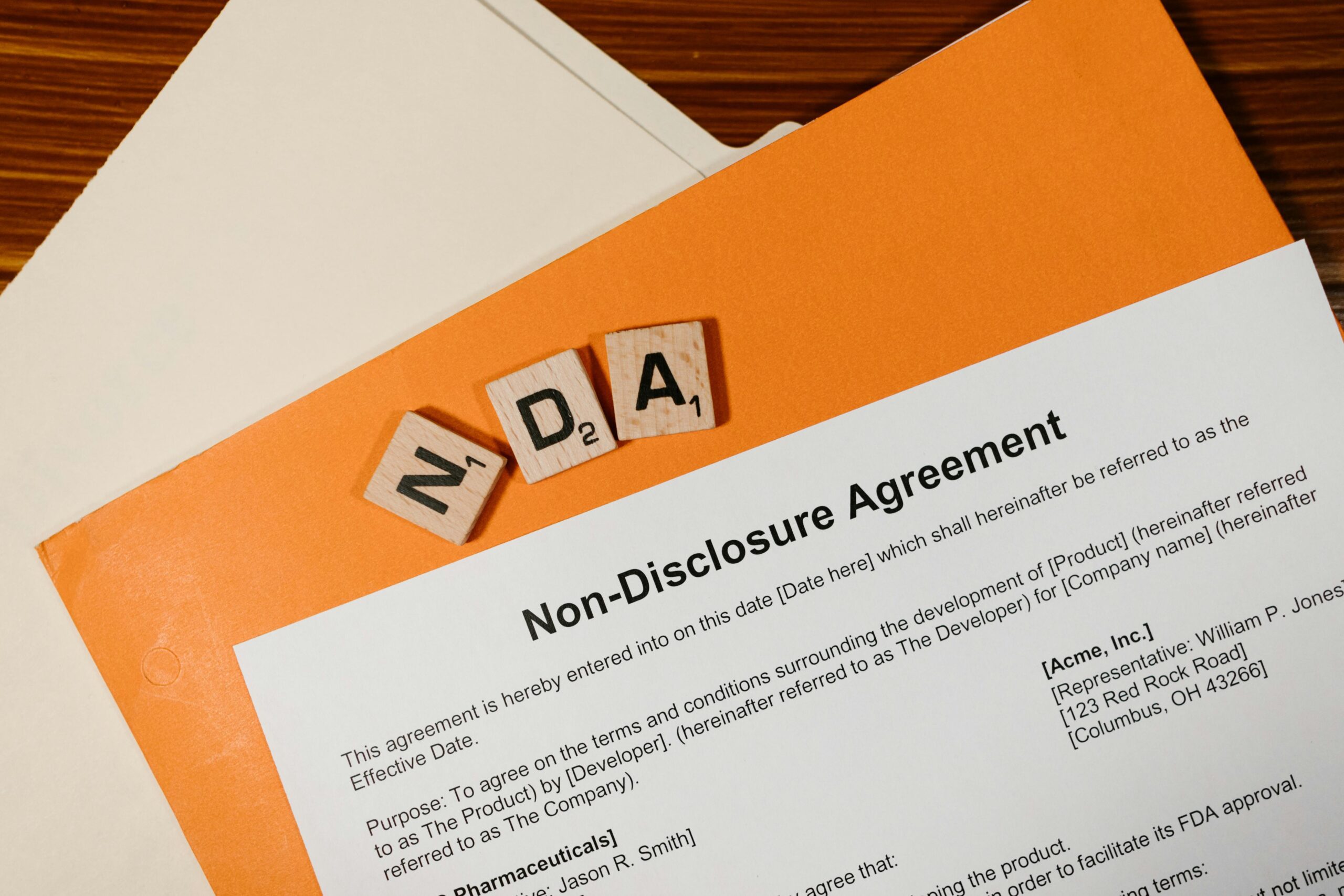Irrevocable Trusts:
A Complete Guide to Modern Estate Planning
Trends in Use of Irrevocable Trusts
According to a June 2025 article by Savvy Wealth, roughly 34% of high net worth households already rely on irrevocable trusts, and another 16% expect to set one up within five years. Those percentages continue to climb as families look for tools that combine tax efficiency with strong creditor protection. The pages that follow explain what drives this growth, how different trust designs work, and where Oklahoma law adds its own twist.
Irrevocable versus Revocable Trusts
Both revocable and irrevocable trusts essentially serve as “holding entities” for property, which can include real estate, personal property, cash, or other forms of assets. However, the key difference between revocable and irrevocable trusts is in the level of control each trust form allows. A revocable trust stays within the original owner’s control, allowing flexibility in changing the terms of the trust agreement and the assets being held under the trust. Conversely, an irrevocable trust is much less flexible once established. After assets are moved into the turst, the original owner (often called the “settlor”) generally loses the power to reclaim them. The benefit of this inflexibility is that assets in an irrevocable trust are typically outside the taxable estate, and are shielded from most taxes and personal creditors. However, given the permanent nature of an irrevocable trust, it is vital to draft the trust agreement and related trust documents carefully and intentionally.
Key Players and Moving Parts
Settlor
The “settlor” (or “grantor”) is the individual (or entity) who contributes assets to the trust and establishes the rules which govern the trust. Once the trust is funded, the settlor usually steps back, although some trusts can be structured to allow limited ongoing influence for the settlor. Typically, this ongoing settlor power is accomplished through granting the settlor powers of appointment, or as a separately named ‘trust protector’, responsible for ensuring the proper administration of the trust.
Trustee
A “trustee” (or “trustees”, if multiple are appointed) acts as a fiduciary for the trust, tasked with managing the trust property and following the written instructions in the trust agreement. Generally, trustees are typically either professional coporate trustees, and/or family members or friends of the settlor. A corporate trustee can bring professional oversight in the management of the trust, while an individual trustee can offer personal familiarity with both the settlor and their wishes for how the trust should be administered. While the decision of who to appoint as trustees for the trust, trustee selection can ultimately affect the investment style of the trust’s assets, the level of flexibility in how and when distributions are made to beneficiaries, and the overall cost of trust administration.
Beneficiaries
“Beneficiaries” are the individuals, entities, or charities who receive benefits, whether as recipients of trust income, ownership or control over the principal assets, or both. Essentially, they are the individuals or organizations for whom the trust is created and who will ultimately receive its distributions. Depending upon the discretionary provisions drafted in the trust agreement, allocations of benefits among the beneficiaries can be structured to shift over time or as a result of certain events. For example, benefits can shift following changes in family circumstances, such as a beneficiary’s marriage, birth of a grandchild, or the beneficiary reaching a certain age.
Trust Protector
A “trust protector” is typically a neutral third party, appointed in a trust document to oversee the trustee and ensure the trust’s proper administration, often with the power to modify the trust under specific circumstances. They act as a safeguard for the trust’s integrity and beneficiaries’ interests, ensuring the trustee fulfills their duties. While not a trustee themselves, a trust protector can have significant powers, including the ability to remove and replace trustees, amend the trust, and resolve disputes. A key benefit of naming a trust protector is the flexibility it provides for an irrevocable trust, a structure that is otherwise extremely difficult to make changes to.
Top Reasons Families Choose Irrevocable Trusts
Federal Estate Tax Exemptions Under the OBBBA
Recently signed into law by President Trump, the “One Big Beautiful Bill Act” (OBBBA) has raised the federal estate tax exemption to $15 million per individual (and $30 million for married couples), beginning in 2026. This exemption amount will be adjusted for inflation annually beginning in 2027. This new law permanently increases the exemption and prevents the previously scheduled reduction of the exemption, which was set to revert to lower pre-2018 levels under the Tax Cuts and Jobs Act of 2017. This change simplifies estate planning for many families by reducing the number of estates subject to federal estate taxes. Fewer estates will be taxed under this new law compared to prior law. However, these changes only affect the federal estate tax, while individual states may have lower exemption amounts at the state level. See this recent article by the National Law Review for more information on the new OBBBA exemptions.
Asset Protection with DAPTs and Oklahoma’s DAPT Structure
Properly drafted irrevocable trusts legally separate grantors from trust assets, which places transferred assets beyond the reach of most lawsuits and creditors. Additionally, roughly 20 states allow for individuals to create an irrevocable trust with themself as a beneficiary, a type of trust known as a domestic asset protection trust (a DAPT or “self-settled trust”). Although there are some limitations and restrictions on DAPTs (for example, assets transferred into a DAPT cannot leave the settlor unable to pay off debts to known creditors), settlors can obtain many of the same asset protection benefits as a typical irrevocable trust – while still maintaining some of the benefits of the trust assets.
Fortunately, Oklahoma is one of the several states that does allow for the creation of DAPTs, including revocable DAPTs – which is a unique and uncommon structure available under Oklahoma’s estate laws. Under the recent Oklahoma Trust Reform Act of 2025, Oklahoma DAPTs generally protect trust assets from the settlor’s creditors, but caps asset protection at $1 million. Additional requirements for Oklahoma DAPTs include: a majority of assets must be in Oklahoma-based investments, there must be an Oklahoma-based trustee, and the trust agreement must include a spendthrift provision.
Popular Irrevocable Trust Structures
Standard Gift Trust
A gift trust accepts annual-exclusion transfers or lump‑sum gifts aimed at children or grandchildren. Beneficiaries often receive Crummey withdrawal rights (which allow beneficiaries to temporarily withdraw contributions for a limited period, such as 30-60 days), giving them a short window to withdraw each contribution. That temporary access converts the gift into a present‑interest transfer subject to the annual exclusion, allowing the assets to stay inside the trust for long‑term investment and protection. Over time, disciplined gifting can shift sizeable wealth without eating deeply into the lifetime exemption.
Spousal Lifetime Access Trust (SLAT)
A SLAT allows one spouse to gift assets while also retaining indirect access, using the other spouse is a discretionary beneficiary. If drafted carefully, a married couple can enjoy trust distributions while the gifted property (and all future appreciation) remains outside both spousal estates. Avoiding the “reciprocal trust doctrine” is key: the two trusts must differ in timing, funding sources, or powers so tax authorities do not view them as mirror images meant to undo the very transfer they claim to accomplish.
Grantor Retained Annuity Trust (GRAT)
A GRAT freezes an asset’s current value by paying an annuity back to the settlor for a fixed term, often set so that the actuarial present value nearly equals the contribution. If the asset grows faster than the IRS Section 7520 benchmark rate, residual growth passes to heirs with little or no gift tax cost. Short‑term “rolling GRATs”, stacked year after year, can capture upside during volatile markets while limiting risk that the settlor dies before the term ends.
Intentionally Defective Grantor Trust (IDGT)
An IDGT is treated as owned by the grantor for income‑tax purposes, yet excluded from the estate for transfer‑tax calculations. This split treatment lets the grantor pay the trust’s income tax, adding an extra “tax‑free” gift every year. Because the trust is treated as owned by the grantor, trust income flows onto the grantor’s personal return. For transfer taxes, however, the trust stands apart, meaning assets and any appreciation escape estate tax. The grantor’s payment of the trust’s income tax adds an extra wealth transfer benefit each year, as the tax bill is not considered a gift to the trust’s beneficiaries.
Irrevocable Life Insurance Trust (ILIT)
ILITs own life insurance policies while keeping any death benefits outside the settlor’s taxable estate. Premiums are typically funded with annual‑exclusion gifts. At death, proceeds vest in the trust, providing a pool of cash that the trustee can use to buy or lend illiquid assets from the estate, equalize inheritances among children active and inactive in a family business, or pay taxes without forcing a fire sale of real estate.
Special Needs Trust
A special‑needs trust improves the life of a beneficiary who needs to preserve eligibility for government assistance (such as disability or Medicaid). Because the trustee controls distributions and cannot give cash directly to the beneficiary, assistance program eligibility remains intact. Distribution funds supplement (rather than replace) government assistance. This supplementation allows for trust funds to be used to cover therapies, adaptive equipment, travel, and other extras that public benefits will not pay for, offering dignity and enrichment without jeopardizing crucial aid.
Charitable Trust Variants
Charitable remainder and charitable lead trusts (CLTs) weave together philanthropic giving with income tax deductions and wealth‑transfer strategies, channeling benefits either to charities or to family members first. Charitable remainder trusts and CLTs combine philanthropy with tax planning. A charitable remainder trust pays income to family for a term or life, after which the remainder goes to charity, generating an upfront income tax deduction. A CLT flips the sequence: charity receives current income for a defined period, then the principal reverts to heirs, potentially at a reduced gift tax value if the trust’s investments outperform the IRS Section 7520 rate.
Funding Mechanics and Tax Landscape
Gift and Estate Tax Basics
Transfers to an irrevocable trust count as completed gifts. When generation‑skipping planning is part of the picture, allocating GST exemption locks in long‑term protection for multiple generations. Transfers to an irrevocable trust represent “completed” gifts. Gifts above the annual exclusion eat into the lifetime exemption but remove future appreciation from the taxable estate, while annual gifts up to the exclusion amount can avoid the need for Crummey-related filings. Larger gifts may also benefit by using the lifetime exemption, which shelters transfers from immediate tax. Allocating generation‑skipping transfer exemption adds an extra layer, ensuring that assets can stay in trust for grandchildren and beyond without future transfer taxes.
Income Tax Treatment: Grantor versus Non-grantor
A grantor trust is invisible to the IRS for income‑tax purposes: the settlor pays tax on trust income on their personal Form 1040 filing, indirectly enhancing the gift by allowing trust assets to compound free of taxes. Conversely, a non-grantor trust files its own Form 1041 return, reaches the top federal bracket quickly, and may deduct distributions. Estates can also form a hybrid, which toggles grantor status on or off through “switch” powers which allow the trustee to add or release powers, optimizing results as family circumstances change. Ultimately, deciding between a grantor or non-grantor trust depends on the trust’s cash‑flow tolerance and overall estate strategy.
Basis Management
Assets gifted into an irrevocable trust carry over the settlor’s basis, meaning heirs could owe capital gains tax on appreciation that accrued during the settlor’s lifetime. Deciding whether to accept that exposure involves weighing projected estate tax savings against potential capital gains liability. Sometimes planners pair a sale to an IDGT with substitution powers, allowing the settlor to swap low‑basis trust assets for high‑basis personal assets later, thereby securing a full step up at death, without increasing estate size.
Building Flexibility into an Otherwise Rigid Instrument
Modern estate planning uses several tools to guard against future uncertainty. Trust protector clauses can amend administrative details, “decanting” clauses let the trustee pour assets into a fresh trust with updated terms, and powers of appointment enable beneficiaries to fine‑tune distributions for the next generation. Some states even allow nonjudicial settlement agreements that let interested parties revise a trust without court oversight, provided they stay within statutory guardrails.
Administration, Pitfalls, and Best Practices
Effective trust administration starts with clean titling to assets. Deeds, stock assignments, and beneficiary designations must list the trust correctly, specifically naming the trust exactly as described in the trust agreement. The trustee should open separate bank and brokerage accounts, obtain an EIN if the trust needs to file taxes separately from the grantor, and keep detailed records for annual accounting. Pitfalls to the use of irrevocable trusts include missteps such as commingling funds, ignoring distribution standards, or missing tax filings – all of which can dismantle asset protection guardrails and result in IRS penalties. Choosing experienced fiduciaries, hiring legal counsel, and scheduling annual compliance reviews mitigate those risks and ensure the integrity of asset protections.
Considerations for Oklahoma-based Trusts
Medicaid Asset‑Protection Strategies
Oklahoma’s large rural population often holds wealth in farmland and mineral rights, assets that cannot be sold quickly without damaging family legacy. An irrevocable trust drafted to block distributions to the settlor can move those properties outside Medicaid resource limits after the five year look‑back period passes. This approach allows elders to qualify for long‑term care support while preserving the land for children who wish to continue agricultural operations.
A properly structured irrevocable trust can hold family farmland or investment real estate, while also keeping those assets excluded from calculations to determine an individual’s qualification for Medicaid and/or veteran’s benefits. For Oklahoma ranchers and farmers, the Oklahoma Bar Association advocates for the use of irrevocable trusts as a “time‑tested” strategy in long term care planning and a well-established approach to protecting assets such as ranches, farmland, and other illiquid holdings.
Tax Filing Nuances
Oklahoma distinguishes resident and non‑resident trusts for income‑tax reporting. Oklahoma classifies trusts as resident when the creator was an Oklahoma resident at the time the trust became irrevocable, or when the trust’s administration is carried out in the state. Trustees who miscategorize can face penalties, so verifying residency and sourcing rules each year is essential, especially when beneficiaries migrate or trustees change. A trust created by an Oklahoma resident that later becomes irrevocable should file Form 513, while non‑resident trusts should use Form 513‑NR. See the Oklahoma Resident Fiduciary tax form packet for more information.
Economic Trends
Recent state reports highlight record capital investment in aerospace and renewable energy, sectors that often create concentrated, illiquid wealth. Trust planning helps owners spread that value among heirs without triggering distressed sales during probate. Local practitioners report increased use of SLATs and ILITs to pair asset protection with Oklahoma’s farm and ranch legacy needs.
Key Takeaways
- Irrevocable trusts remove assets from personal ownership, delivering tax and creditor benefits in exchange for reduced control.
- Design options range from simple gift trusts to complex grantor strategies that keep income tax with the settlor while shifting future growth to heirs.
- Annual compliance, clear titling, and professional trustee oversight protect the structure’s integrity and prevent avoidable tax or creditor attacks.
- Oklahoma families often pair irrevocable trusts with limited liability entities to preserve ranchland, mineral rights, and equity in emerging high‑tech sectors.
- Flexibility tools (such as trust protectors, decanting clauses, and powers of appointment) help a permanent structure remain adaptable as tax laws and family needs evolve.
Legal Disclaimer: This article offers general background information only; trust rules vary by jurisdiction and individual circumstance. This article does not constitute legal advice and does not establish an attorney‑client relationship with Cantrell Law Firm. Consult qualified counsel before relying on any planning approach described here.
Questions about trust planning? Contact an estate planning expert at Cantrell Law Firm today to schedule your free consultation.





